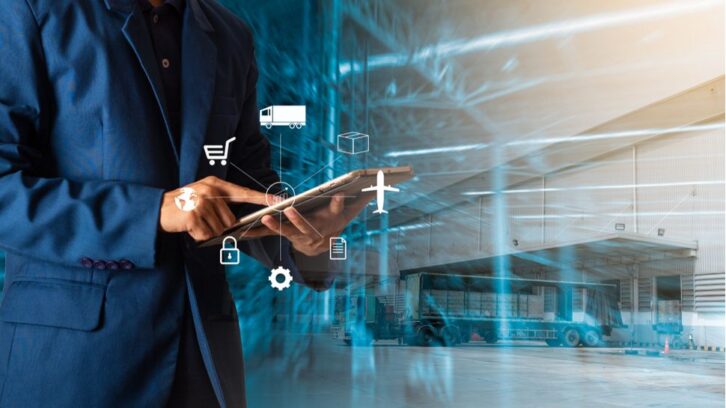
Editor Note: This article originally appeared on our sister site, TechRadar Pro.
Something we’ve all likely experienced in some way over the last couple of years is the fragility of the global supply chain. From late deliveries, empty shelves, or long lead times to purchase a new car—it’s clear that the world relies on the robustness of supply chains.
In response, businesses have begun organizational shifts to prioritize elasticity to market demands and resilience to environmental disruptions. While this shift is mostly reactionary, there are new emerging trends and challenges that will change future supply chains. New consumer expectations, worldwide economic conditions, and the introduction of new technologies are poised to elevate supply chains from necessary cost centers to business growth engines. Here are three ways I see that transformation occurring in 2023.
1. Consumers will expect more in sustainability and responsible sourcing

Consumers are becoming more conscious of how products are sourced and made. Younger generations of consumers spend more, utilize social media and online platforms to make buying decisions, and prioritize sustainability as a purchasing criterion. More than half of consumers would pay more for sustainable products according to a 2019 Accenture survey, with a 2022 survey by The Conference Board indicating that more than 70% of Gen Z respondents say a brand’s actions on climate influence their purchasing choices. Businesses are already modernizing to increase visibility of inventory locations, movement activity, and potential supply chain risks, but new expectations in sustainability will require tracking of additional data such as material source locations, labor utilization types, or carbon emissions.
With global government regulations starting to take effect and with companies issuing new promises to be transparent about their sourcing and green initiatives, vendors will begin offering visibility dashboards and analysis on a company’s supply chain. How much carbon is your business using? Where did your materials really come from? Cloud technology and total supply chain inventory visibility are going to help businesses answer these questions.
2. Personalization will drive a shift back to build-to-order from build-to-demand
Think about how you buy cars today. In years past, the extent of car personalization simply extended to exterior color. Customers now have a host of options to personalize their order such as trim, engine, speakers, and seats. As consumers expect more personalized products, businesses will be more reactive to customer demands and will build “high-speed bespoke supply chains” capable of responding quickly to exact, real demand. This marks a shift from a long-standing focus on building to anticipated demand, focusing instead on building to order to reduce waste and increase customer satisfaction. To prepare for this shift, businesses are investing more in supply chain management tools that provide more accurate inventory forecasting and adaptive rebalancing recommendations based on real-time disruptions in the supply chain.
3. Machine Learning will help improve supply chain margins during economic headwinds
As challenging economic headwinds persist, businesses will need to improve margins while maintaining customer personalization and progress toward sustainability goals in supply chain operations. New cloud-based machine learning (ML) capabilities that leverage the internet of things, facility, and inventory data will improve supply chain resiliency and help improve margins for the changing world in which these supply chains operate. This includes demand planning, where ML can help analyze historical sales data and real-time data (such as open orders) to create forecasts that continually adjust from changing demand patterns and user inputs. Or insights into supply chain risks—such as component shortages, shipping port congestion, unanticipated demand spikes, or weather disruptions—using ML models that convert fragmented supply chain data into a real-time visual map so businesses can quickly see where disruptions may lead to stock-outs or excess inventory.
Climate change has meant that flood zones, which were originally forecast to happen only once every fifty years, are now becoming an every-other-year occurrence. For supply chains, ML can help businesses anticipate which routes and facilities will be affected by these weather disruptions using real-time weather, inventory routing, and facility data to offer re-routing decisions based on customer demand and where inventory will face the least impact.
Disruption ahead?
Modernizing supply chains has often been fraught with expensive development cycles or consulting agreements to build on pre-existing architectures of siloed spreadsheets or antiquated mainframe systems. Even as the world recovers from the global pandemic, economic forces in sustainability and personalization demand that businesses harness cutting-edge technologies in machine learning to preserve margins while offering a superior customer experience. Based on the trends presented here, we may be entering into a new golden era where machine learning and cloud applications make the benefits of a modernized supply chain accessible to more businesses. Never before have businesses had access to these technologies, so it’ll be an interesting year to see how businesses use the supply chain to distinguish themselves.
About the Author
Diego Pantoja-Navajas is the Vice President of New Products, AWS Business Applications at Amazon Web Services.
See also: Executive Insight: Finding New Sales Opportunities In An Old Place












